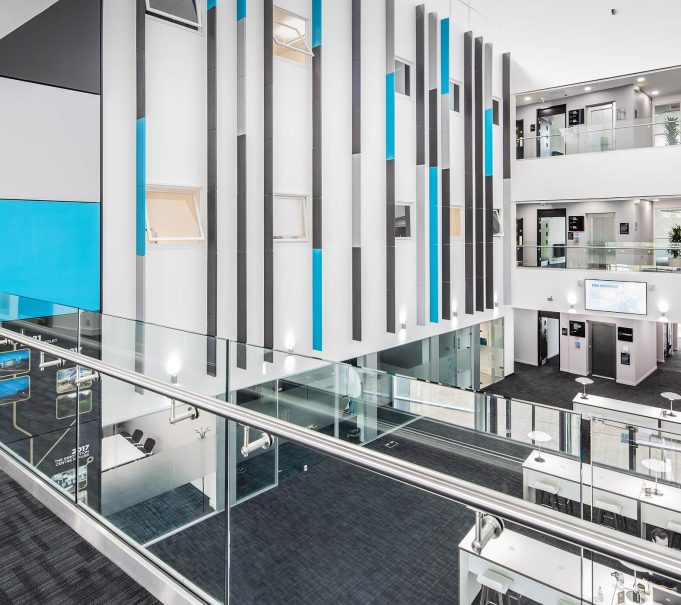In commercial property management, three main pillars are usually believed to hold everything together: maintenance, compliance, and profit. When these parts are balanced well — and honestly, isn’t that harder than it sounds? — properties are made to run smoothly, meet required rules, and produce strong financial results. Trusted partners like Langtree are often relied on, and their support is felt in the way assets are kept safe, compliant, and yes, nicely profitable over time.
Commercial Property Management is often viewed as something more than simple building upkeep. It is seen as a structured system designed to protect value, meet legal duties, and make steady profits. Whether office blocks, retail places, or industrial sites are being handled, one aim is commonly shared: returns must be maximised while smooth operations and regulatory confidence are kept in place — sounds familiar right?
The Foundation of Maintenance
Maintenance is often referred to as the base of good property performance. Buildings are kept safe, usable, and appealing for tenants — because honestly, who wants to rent a broken place? When maintenance is ignored, occupancy drops, repair bills grow, and asset value gets damaged rather quickly.
Efficiency and stability are usually created through regular checks, preventive work, and timely repairs. With a proactive plan, fewer emergencies are experienced (thankfully!) and performance becomes stronger in the long term. Systems are serviced, infrastructure is updated on time, and operational costs are lowered, which also boosts tenant happiness — a win, right?
Maintenance is commonly carried out by:
- Doing routine safety inspections to protect the building’s structure.
● Improving energy systems to meet modern efficiency needs.
● Caring for outside areas to keep good visual appeal.
● Using technology to track and predict upcoming maintenance tasks.
Each small step is believed to support long-lasting property health, increase asset life, and protect return on investment.
The Role of Compliance in Building Confidence
Compliance is not only a legal requirement — it is sometimes seen as the heart of trust. In commercial property management, compliance is maintained by following building codes, fire rules, environmental laws, and health and safety standards. A single mistake could be followed by penalties, harm to reputation, or even forced closure. Scary, right?
Property managers are expected to stay ahead of ever-changing laws to keep operations smooth. Compliance systems are usually built into daily tasks — everything from tenant contracts to waste disposal and even data protection. This approach helps ensure no rule is accidentally skipped.
Important compliance actions include:
- Staying updated with national and local property laws.
● Keeping organised records of checks, certificates, and risk reports.
● Following sustainability rules that match environmental policies.
● Making sure all contractors meet safety and performance standards.
By keeping strong transparency and discipline, trust is strengthened between managers, tenants, and investors.
Profit: The Ultimate Measure of Property Success
Profit is viewed as the main measure of success in commercial property management. It shows how well the building is running and how maintenance plus compliance are turning into actual financial gain. A properly maintained, compliant building usually attracts better tenants and higher rent — makes sense, doesn’t it?
Profit depends on:
- Fair and competitive rent pricing.
● Cost-saving maintenance planning.
● Good tenant retention through helpful service.
● Sensible budgeting and financial forecasting.
Whether the property is owned by local councils, private firms, or individual investors, strong profitability keeps performance steady and supports future reinvestment.
Integrating the Three Pillars for Maximum Value
Success in commercial property management is believed to come from balancing maintenance, compliance, and profit. If one is missed, the whole structure becomes weak. For example, if maintenance fails, compliance might fall apart too; and without compliance, profit may collapse completely — surprising how connected they are, right?
Integration is supported by:
- Making a combined plan that covers legal, operational, and financial goals.
● Using digital systems for real-time tracking.
● Aligning maintenance schedules with compliance checks to cut downtime.
● Reviewing budgets every quarter to maintain balance between costs and income.
This joined-up method helps properties stay efficient, compliant, and profitable throughout their lifecycle.
Sustainability and Future-Proofing
Sustainability is now influencing the entire commercial property field. Energy-efficient buildings are being valued more because they meet compliance standards and reduce running costs — instantly improving profit. Maintenance plans now include renewable energy, waste reduction, and smart energy monitoring. Pretty helpful, right?
By planning ahead with sustainability, property value is increased. Tenants and investors are now preferring eco-friendly places that show cost savings and responsible management.
The Importance of Technology in Modern Property Management
Technology is being seen as essential for managing all three pillars. Smart tools allow managers to track maintenance, automate compliance reminders, and check profit trends. Everything becomes easier — sometimes unbelievably easier!
Digital property platforms help managers:
- Update maintenance tasks instantly.
● Never miss compliance deadlines.
● Compare expenses with revenue for better planning.
● Find weak areas and improve decisions.
By using digital systems, fewer mistakes are made and more transparency and accuracy are achieved.
Communication and Tenant Relations
Tenants are placed at the centre of a property’s success. Open communication and quick responses help build long-term relationships, increasing lease renewals and steady income. Managers are expected to stay in regular contact to solve maintenance issues, share compliance updates, and collect feedback. A healthy tenant relationship builds trust — which always supports profitability.
The Financial Framework
Behind every successful property portfolio, a strong financial structure is usually found. Regular financial checks, open reporting, and performance reviews help managers track progress and adjust plans.
A good financial structure includes:
- Making realistic revenue goals using market patterns.
● Tracking maintenance costs and removing wasteful spending.
● Saving funds for emergency repairs or sudden regulation changes.
● Estimating future returns to support planning.
This financial care keeps properties resilient and protects investor confidence.
Continuous Improvement and Adaptability
The property market keeps changing. Managers are expected to adapt quickly as laws, tenant needs, and market trends shift. By focusing on continuous improvement, property managers stay proactive rather than reactive — a far better place to be, right?
Training, skill development, and joining industry events help teams stay knowledgeable and ready for what’s coming next.
Conclusion: Building Lasting Value Through Balance
Maintenance, compliance, and profit are widely believed to be the three pillars of commercial property management. Each one supports the others: maintenance gives function, compliance builds safety and trust, and profit ensures long-term growth. When balanced well, they create strong property performance and real community value.
With expert partners such as Langtree, property managers are empowered to maintain high standards, keep steady returns, and encourage long-term progress. A property is no longer viewed as just a physical place — it is seen as a living system shaped by performance, trust, and shared prosperity.














